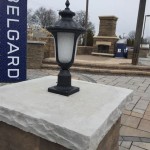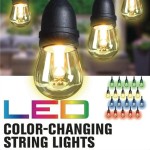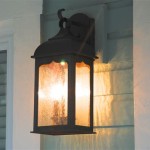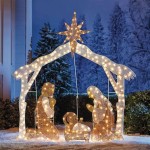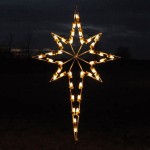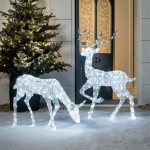Outdoor Street Lighting Design: Illuminating the Night
Outdoor street lighting plays a crucial role in enhancing public safety, promoting urban vibrancy, and creating aesthetically pleasing environments. From illuminating streets and pathways to accentuating architectural features, effective street lighting design involves careful consideration of various factors. This article explores key aspects of outdoor street lighting design, highlighting essential elements that contribute to successful outcomes.
Illumination Levels and Distribution
Determining the appropriate illumination levels and distribution patterns is paramount in street lighting design. Illumination levels are measured in lux (lx), with different standards applying to various areas and activities. For instance, residential streets may require lower lux levels than high-traffic thoroughfares or pedestrian zones. Illumination distribution refers to the way light is spread across the illuminated area, and it can be classified as symmetrical, asymmetrical, or directional. Symmetrical distribution provides uniform lighting, while asymmetrical patterns focus light towards specific areas. Directional lighting, as the name suggests, directs light in a specific direction, often used to highlight architectural features or signage.
The choice of illumination levels and distribution depends on factors such as the surrounding environment, the intended purpose of the lighting, and local regulations. For example, areas with high pedestrian activity might benefit from higher illumination levels and wider distribution patterns to enhance visibility and safety. Conversely, residential areas might prioritize lower illumination levels to minimize light pollution and preserve the nighttime ambiance.
Light Source Selection
The selection of light sources is a critical aspect of outdoor street lighting design, as it impacts energy efficiency, light quality, and lifespan. Traditional incandescent bulbs have been largely replaced by more efficient alternatives, such as LED (light-emitting diode) lamps. LED technology offers significant advantages, including reduced energy consumption, longer lifespan, and improved light quality. Moreover, LED lamps emit less heat, reducing the risk of thermal damage and ensuring safe operation.
Other light source options include high-intensity discharge (HID) lamps, such as metal halide and sodium vapor lamps. These lamps provide high lumen output and are suitable for illuminating large areas, although they have a shorter lifespan and require longer warm-up times compared to LEDs. When selecting light sources, factors such as color temperature, color rendering index (CRI), and light distribution patterns are crucial considerations.
Pole and Fixture Design
The choice of pole and fixture design influences the aesthetics, functionality, and overall effectiveness of the street lighting system. Pole materials include steel, aluminum, concrete, and wood, each offering unique advantages and disadvantages in terms of cost, durability, and visual appeal. Fixture design encompasses factors such as housing material, shape, and size, as well as the optical system used to direct and control light distribution.
Consideration of the surrounding environment is paramount in pole and fixture selection. For example, in historic districts, poles and fixtures should complement the architectural style to maintain the aesthetic integrity of the area. In coastal areas, corrosion-resistant materials should be prioritized to withstand the harsh marine environment. Overall, the design of poles and fixtures should be functional, aesthetically pleasing, and durable to ensure a long-lasting and effective lighting system.
Environmental Considerations
Outdoor street lighting design must address environmental considerations to minimize negative impacts. Light pollution, defined as excessive or misdirected artificial light, can have adverse effects on wildlife, human health, and energy consumption. Careful selection of light sources, shielding, and directional control can minimize light pollution and promote sustainable development. Additionally, energy-efficient lighting technologies, such as LED lamps, reduce energy consumption and greenhouse gas emissions.
Furthermore, outdoor street lighting design should consider the impact on surrounding ecosystems. For example, using light sources with minimal blue light emissions can minimize disruption to nocturnal wildlife. The use of dark sky-friendly lighting practices helps preserve the natural night sky and promote stargazing opportunities.
Integration with Other Systems
Outdoor street lighting can be effectively integrated with other smart city systems to enhance functionality and efficiency. For instance, integrating street lighting systems with traffic management systems allows for adaptive lighting based on real-time traffic conditions. This can optimize light distribution for safety and enhance energy efficiency. Additionally, integrating street lighting with security cameras and sensors enables monitoring and response in case of emergencies or criminal activity.
Furthermore, smart street lighting systems can offer remote monitoring and control capabilities, allowing for real-time maintenance and performance optimization. These features contribute to a sustainable and efficient lighting infrastructure that meets the evolving needs of modern cities.

Road Street Amenity Lighting Designs For Outdoor Use

Bollards Meet Street Lights To Define A Pedestrian Via Outdoor Lighting Design Light Diy

Outdoor Lighting Design And Deployment Engineering Note Zhl Group

Modern Design Outdoor Street Lighting Lamp Solar Powered Led Light Ip65 Waterproof Road China Posts Made In Com

Mvva S Forest Inspired Waterfront Park Features Structura Outdoor Post Lights Street Light Design Installation

Outdoor Lighting For Walkways Illuminate Your Pathway With Led Lights Ledmyplace

5 Guidelines To Parking Lot Lighting Design Gbl Inc

4 M 40 W Modern Design Light Poles For Outdoor

Street Furniture And Outdoor Luminaires Lighting Design Solutions Limited

Outdoor Large Area Led Lighting Flood Lights And Fixtures
Related Posts
